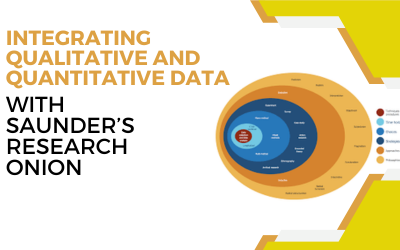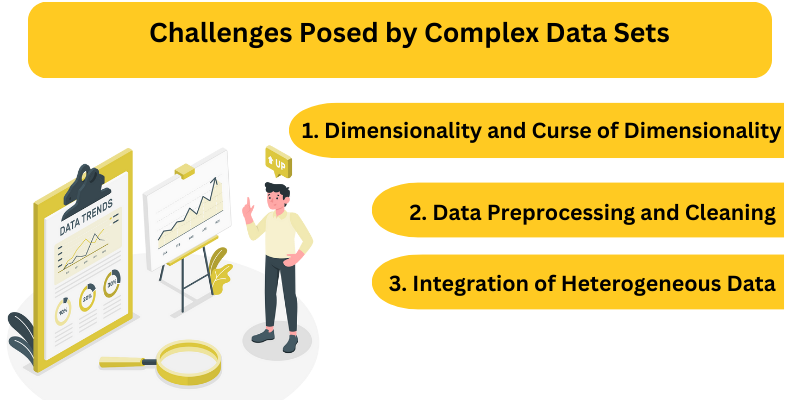
Welcome to our blog where we unravel the secrets of research using Saunder’s research onion. Ever wondered how researchers seamlessly blend qualitative and quantitative data with Saunder’s research onion? Well, that’s where Saunder’s research onion steps in, acting like a trusty guide. Think of it as peeling back layers to reveal a perfect mix of detailed insights and broad facts.
This blog dives into the world of research onion, explaining why it’s a big deal. It’s not just about making research look fancy—it’s about giving it a strong backbone. Saunder’s Research Onion is crucial for guiding researchers through the multi-layered process of designing and conducting empirical studies. It provides a systematic framework, helping researchers navigate various methodological choices and ensuring a well-structured, robust research design, ultimately enhancing the quality and reliability of research outcomes.
Definition of Research Onion
The Research Onion is like a guide for researchers, created by Saunders, Lewis, and Thornhill. It helps in planning research step by step. Imagine it as layers of an onion. In these layers, we use different ways to gather information—some layers focus on understanding details (that’s qualitative), while others look at the bigger picture with numbers (that’s quantitative).
For example, if we’re studying something, the outer layers might involve talking to people or studying texts (qualitative), while the inner layers might use surveys or experiments (quantitative). The Research Onion is like a map, making sure researchers cover all angles for a strong study.
Before diving into the meat of the discussion, let us learn some of the examples of qualitative and quantitative data in research onion so that we can easily understand this blog.
Examples of Qualitative and Quantitative Data in Research Onion
1 . Qualitative Data Example in Research Onion:
i) Imagine interviewing people to understand their experiences or opinions.
ii) This qualitative approach, found in the outer layers of the Research Onion, brings depth to the study.
2. Quantitative Data Example in Research Onion:
i) Now, picture collecting numerical data through surveys or experiments.
ii) This quantitative method, situated in the inner layers of the Research Onion, provides statistical insights and broader perspectives.
The importance of Research Onion lies in its ability to blend these approaches seamlessly, ensuring a well-rounded research design that captures both detailed narratives and numerical trends for a comprehensive understanding.
Now let us know 3 most important steps to integrate qualitative and quantitative data using Saunder’s research onion.
Step 1: Define Research Objectives
i) Clear Direction:
a) Defining research objectives provides a roadmap for the entire study.
b) It gives a clear direction on what needs detailed exploration (qualitative) and where broader statistical insights are needed (quantitative).
ii) Focused Inquiry:
a) Helps in narrowing down the scope.
b) By understanding the specific goals, researchers can focus on the relevant layers of Saunder’s Research Onion, preventing unnecessary diversions and ensuring a targeted integration of both qualitative and quantitative data.
iii) Tailored Data Collection:
a) Enables the selection of appropriate data collection methods.
b) With well-defined objectives, researchers can choose methods that align with the nature of the data required, ensuring a harmonious integration of qualitative and quantitative data with Saunder’s research onion.
iv) Enhanced Research Relevance:
a) Ensures the study remains pertinent to the research question.
b) By clearly defining objectives, the integration process becomes purposeful, leading to a more relevant and impactful synthesis of qualitative and quantitative data.
Step 2: Select Appropriate Layers of Research Onion
i) Helps in choosing methods aligned with research goals.
ii) Selecting layers of Saunder’s Research Onion strategically ensures that the chosen qualitative and quantitative methods are in harmony with the nature of the data required for a comprehensive study.
iii) Avoids confusion and maintains methodological clarity.
iv) By adhering to specific layers, researchers can prevent the mixing of incompatible methods, ensuring a clear and structured integration process, and highlighting the importance of research onion in maintaining methodological coherence.
v) Maximizes the use of resources.
vi) Choosing the appropriate layers optimizes the allocation of time and resources, as researchers focus efforts on the methods that best suit the study’s objectives, underscoring the importance of research onion inefficient research planning.
vii) Ensures a seamless integration process.
viii) The selected layers provide a logical sequence for integrating qualitative and quantitative data, creating a smooth flow that enhances the overall integration with Saunder’s research onion.
Step 3: Sequential Integration and Interpretation
i) Holistic Understanding:
a) Facilitates a comprehensive grasp of the research findings.
b) Sequential integration ensures that qualitative insights and quantitative trends are woven together, offering a holistic understanding of the studied phenomenon as outlined in the definition of research onion.
ii) Storyline Development:
a) Enables the creation of a cohesive narrative.
b) By progressing through the layers systematically, researchers can develop a storyline that seamlessly connects qualitative narratives with quantitative data points, presenting a unified and coherent picture of the research outcomes.
iii) Robust Validation:
a) Enhances the reliability of the study.
b) A sequential approach allows for the validation of findings across different layers, reinforcing the robustness of the integrated qualitative and quantitative data.
iv) Informed Decision-Making:
a) Empower researchers to make informed conclusions.
b) By interpreting integrated data step by step, researchers are better equipped to draw meaningful conclusions, provide valuable insights and contribute to the overall success of the research as per the definition of research onion.
Final Thoughts
In wrapping up our exploration of integrating qualitative and quantitative data with Saunder’s research onion, it’s evident that this methodological framework serves as a beacon for researchers seeking a harmonious blend of qualitative depth and quantitative breadth.
Saunder’s Research Onion, akin to a guide, facilitates a systematic integration of these two essential data paradigms, creating a robust research design. The importance of research onion lies not just in its structured approach but in its role as a unifying force, ensuring that qualitative narratives and quantitative trends seamlessly intertwine.
By following the defined steps and selecting appropriate layers along with the examples of qualitative and quantitative data in research onion, researchers can navigate the complexities of their study with clarity and efficiency.
As we peel through the layers of the onion, we recognize its significance in providing methodological coherence, resource optimization, and ultimately, a holistic understanding of the researched phenomena. In essence, Saunder’s Research Onion emerges as a key ally in fostering insightful and impactful research endeavors.
PhDChennai.com is a website that provides research assistance to PhD scholars. They offer a wide range of services, including research proposal writing, thesis writing, and statistical analysis. Their research proposal writing service is designed to help scholars develop a well-organized proposal that clearly conveys the significance of their research.
The proposal is written by expert academic writers who can justify the relevance of the research question and the scholar as a potential researcher. The proposal consists of a good literature review, appropriate methodology, and a comprehensive explanation of the research proposed. PhDChennai.com also offers PhD project guidance in Chennai, which aims to make the PhD research journey smoother for scholars from across the world.
They have a team of academic professionals who not only have research expertise but also have subject matter expertise in varied academic fields. Their timely and high-quality research support services and PhD project help can definitely guide you in the right direction and make your work unique and comprehensive.
FAQs
1. How does Research Onion work?
Ans. Research Onion works by guiding researchers through layers of methods, from qualitative exploration to quantitative analysis.
2. What are the research methods of onion?
Ans. The research methods of Onion include qualitative approaches in the outer layers and quantitative techniques in the inner layers.
3. Why is it important to consider philosophical assumptions in research?
Ans. Considering philosophical assumptions in research is crucial for aligning methodologies with underlying beliefs and ensuring study coherence.
4. Can the Research Onion be applied to any research discipline?
Ans. Yes, the Research Onion can be applied to any research discipline, providing a flexible and comprehensive framework.
5. How does the Research Onion promote methodological rigour in research?
Ans.The Research Onion promotes methodological rigour by offering a systematic and structured approach, preventing haphazard research design and ensuring a thorough exploration of both qualitative and quantitative dimensions.

